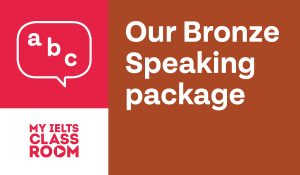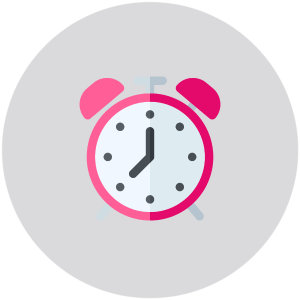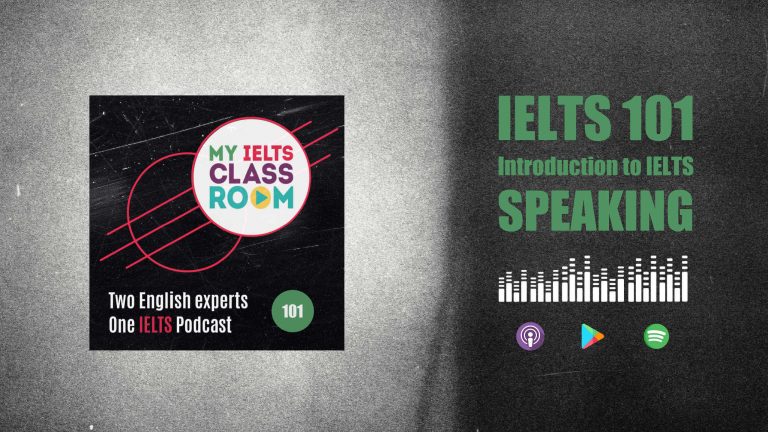
Introduction to IELTS Speaking
Welcome to the second lesson in our IELTS 101 series – an introduction to IELTS speaking. This should be a fantastic episode for anybody who is just starting their IELTS preparation as Nick and describe what happens in each part of the test and what the examiner is looking for in your performance.
This is a Patron Only Episode: Click here to support the show and gain access to the audio

https://www.patreon.com/myieltsclassroom
We will start by giving you all of the essential IELTS speaking test facts, so you clearly understand what the test involves and how your speaking will be assessed. Then, we will go on to chat about what exactly happens inside the test room from the moment you open the door and greet the examiner to the moment you say thank you and leave! Hopefully, by the end of the lesson, you will not only know what to expect in each part of the test, but you will also know how to approach each part to maximise your score.
Below, you can find a summary of the episode, which includes all of the links to useful materials and the times of each part of the discussion (so you can go directly to the part you want to listen to). You can also find every episode of the podcast here🚀
Subscribe to My IELTS Classroom podcast on Apple podcasts here
Subscribe to My IELTS Classroom on Google podcasts here
My IELTS Classroom Podcast Episode 2 Summary: Introduction to IELTS Speaking
00.00 – 1.50: Introduction to the episode (why we are excited about today).
1.58 – 4.14: Basic facts about the IELTS speaking test.
Before you start to prepare for IELTS speaking, it is important that you know what happens in the test and how you will be assessed:
- The IELTS speaking test is a 12 – 14 minute face-to-face interview with an examiner that is broken into 3 parts. The test is exactly the same for Academic and General Training students and is recorded for security purposes.
- In Part One, the examiner will ask you questions on up to three personal topics. All the questions require you to talk about your own life and are on familiar topics e.g. daily habits, likes, work, etc. Part One lasts up to 5 minutes.
- In Part Two, the examiner will ask you to speak for between one and two minutes about a particular topic that is given to you on a cue-card. You will have one minute to prepare before you speak. You may make notes during this time. Part Two lasts up to 4 minutes.
- Finally, in Part 3, you will have a discussion of a more abstract nature with the examiner. The questions in this part are based on the same topic as Part 2. Part Three lasts up to 5 minutes.
When the exam ends, the examiner will give you a score from 0 – 9 in each of the following four areas:
- Fluency and Coherence (i.e. how easily you can speak and be understood)
- Lexical Resource (i.e. the level of the vocabulary you use in your responses)
- Grammatical Range and Accuracy (i.e. the level of the sentence structures in your responses)
- Pronunciation (i.e. how easily you can be understood and how well you use your voice to stress the importance of information)
Your final score will be the AVERAGE of the four scores. Please note that scores are rounded DOWN, so to get a score of 7.0, you must have an average of 7.0 or higher. If you score 7776, then you will be awarded an overall 6.5.
04.15 – 7.49: What should you do before the test starts?
You will either be invited into the test room by your examiner or asked to enter by the administrator who registered you for the speaking test. We recommend that you greet the examiner with a smile and a nice “hello” but nothing more. Even though the test has not begun, the examiner has already started recording the test and is not allowed to interact with you (so it is awkward if you start to chat because they will not be able to respond).
Once you sit down, the examiner will start by recording some official information (the date, the test centre, your name and candidate number, and their name and examiner number). This is just to make sure that you are the right candidate and there is an official record of the interview! During this time, you can relax and try to become accustomed to your surroundings. Again, the test has not started at this stage!
07.50 – 16.43: What happens in IELTS Speaking Part 1?
When the examiner sits down and says “good morning”, this is the moment that the stopwatch starts and the test officially begins. However, you will still have to wait for the examiner to check your name and identification before the questions start.

Therefore, when the examiner asks “Can you tell me your full name, please?” that isn’t really an invitation to talk about your name – they just need to confirm your identity! Please don’t start to explain why your parents gave you your name, or what your nickname is – the examiner will not be able to respond and there are strict rules about time, so they may interrupt you. Just state your name clearly and wait to hear the words:
In this first part of the test, I’d like to ask you some questions about yourself.
Once you hear those words, it is finally time for you to speak!
You will be asked about up to three topics in Part 1, but the first set of questions are always either about:
- your home / the area where you live
- your job OR your studies
Even though these topics are predictable, it is NOT a good idea to memorise your answers. If you do this, your speech is likely to be unnatural and, because the questions change in every test, your memorised “speech” is also unlikely to really address the question. Just answer the questions naturally!
After these introductory questions, you will be asked up to 8 more questions on two more topics (there are 4 questions in each topic frame). There is no correct length of answer for Part 1 – in fact, we strongly recommend that you do not count your answers. You should focus on answering each question naturally.
You obviously want to extend your responses (so no one word answers), but you don’t always need to stop at 3 sentences and you definitely don’t want to keep on speaking until the examiner stops you! The best way to approach this part of the test is to imagine that you are starting a new job or university course and you are chatting to a new friend or colleague about your life . You can read more about the length of Part 1 answers in this blog post.
Speaking Part 1 should be the easiest part of the test, however, some of the questions here can sometimes be a little “strange” (for example “When was the last time you looked at the sky?”), and, as a result, the conversation can be a little bit “synthetic”.
17.25 – 28.45 : What happens in IELTS Speaking Part 2?
In Part 2 of the IELTS speaking test, you are asked to speak for 1 to 2 minutes in response to a cue card. You will have one minute before you speak to prepare. If you have never seen a cue card, you can look at the example on the left. I describe the nine main types of cue card on this blog post.
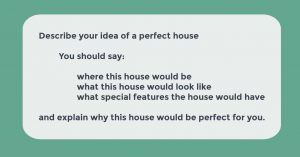
However, on every cue card there is a main topic at the top and then THREE bullet points underneath with information that you are asked to include in your talk. There is also a sentence at the end that asks you to describe your feelings about the event on the card. You will find many myths about IELTS speaking Part 2 online, but here are the facts:
- You do not have to use the 1 minute preparation time, but I strongly recommend that you do. Make notes of the main ideas you want to include in your speech and any high-level vocabulary that you think will be useful.
- You DO NOT need to include all of the bullets – in fact, it is perfectly fine to include NONE of the bullets as long as you talk about the main topic.
- Even though you are asked to talk between 1 and 2 minutes, you really want to aim to speak for the full 2 minutes. An examiner can NEVER interrupt you before the 2 minutes are over – if you think that this has happened, you should complain to the administration once the test is over (although often the 2 minutes goes so quickly that it only FEELS shorter).
- When the 2 minutes are up, the examiner will interrupt you – this is a GOOD sign! It means that you spoke for the required time, which is important for your fluency and coherence score.
- You may be asked a short follow-up question at the end of Part 2 – your answer to this should be very short (literally 4 or 5 words) unless you asked to end your 2-minute long-turn early.
- If you see the examiner writing some numbers when you finish speaking, this is the TIME. Examiners never write your scores, but they must strictly control the timing of each part (otherwise they can lose their jobs!).
We will talk in future episodes about good techniques for IELTS Speaking Part 2, but you can also take a look at the free lessons on our blog now. Although Part 2 can feel difficult at first, in our experience, it becomes much easier with practice, and this is the one part of the test that you can prepare on your own.
28.46 – 34.43 : What happens in IELTS Speaking Part 3?
In the final part of the IELTS speaking test, you will have a 5 minute conversation with the examiner on the SAME TOPIC as Part 2. For example, if your cue card asked you to describe your ideal home, you may now be asked questions about styles of houses in your country or how town planning affects the way that a city functions.
As you can see, these questions are much more abstract than those asked in Part 1. In fact, you should NOT give personal answers in this part of the test. IELTS has already given you the chance to talk about yourself, now the examiner wants to see if you can discuss impersonal social topics.
Now the exam is testing if you can perform particular functions in English i.e. if you can compare, or give an opinion, or predict the future (you can read more about the types of language you will need to demonstrate here).
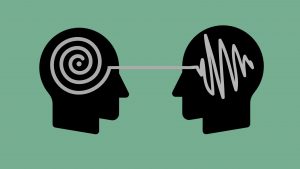
Also, this part of the test is much more interactive than Part 1 – you should be prepared for the examiner to interrupt you to ask for clarification of your view or for more details. This can come as a shock for students if they are not expecting it but is very likely to happen in your test, especially if you are a high-level student. Honestly, the more difficult your questions are, and the more the examiner asks you to explain or clarify, usually the higher your score will be.
34.44 – 37.45: What should you do after the test ends?
You should smile 😁, and leave the room 🚶♂️. The examiner will never tell you the score, so please do not ask! Just breathe a sigh of relief, leave and do something nice to reward yourself for completing the test.
Once you leave the exam room, your examiner will give you a score for each part of the test. Your test will not be heard by a second examiner unless you ask for an Evaluation of Results.
38.14 – END : Final advice and a look at next week’s episode.
I hope that this introduction to IELTS speaking has given you a great idea of what will happen in your test. You can find lots more free advice on this blog (just have a look for “Speaking” in the menu above).
Would you like expert help to improve your IELTS speaking score?
We offer a 5-day intensive course for IELTS test-takers every month that covers all aspects of speaking, from how to approach each section to how to paraphrase well or address the most difficult questions in Part 3. Even better, with every course being run by an ex-examiner, you will be getting feedback is guaranteed to help you to improve your score. You can read more about the course here.
